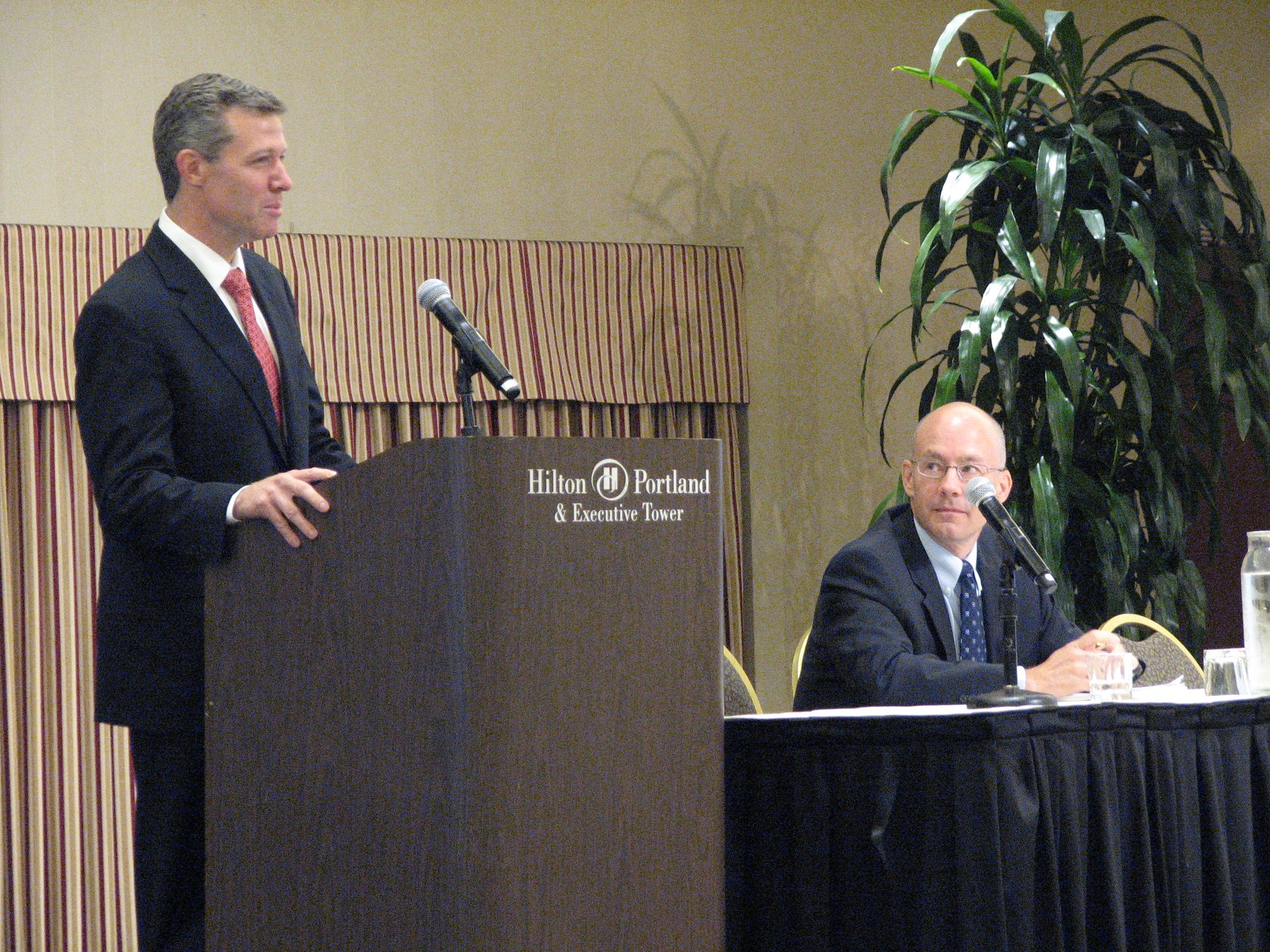The Transportation Research Board’s 99th Annual Meeting will be held in Washington, D.C. from Jan. 12-16, 2020. Click here for more information.
AASHTO-ld you so!
State transportation leaders want federal cash to continue to flow over the next six years with no increase in the percentage for mass transit and without having to prove any progress for maintaining existing roads or making them safer.
The American Association of State Highway and Transportation Officials released recommendations this month calling on Congress to continue funneling 80 percent of federal transportation funds into highways and keeping only 20 percent for transit when renewing the surface transportation bill.
"We’ve largely maintained an emphasis on honoring the 80-20 split, and I imagine that kind of balance will hold," Susan Howard, the program director for transportation finance for the association of state transportation officials, told Streetsblog. "We haven’t taken a position on expanding the transit ratio. If we expand funding overall, then we will be able to tinker with the ratios."
AASHTO also urged Congress to pass the five-year Fixing America's Surface Transportation Act before the current version expires in September — and argued that the law should not include performance measures tied to how that funding will be spent on roads and rails.
That stance has roiled transportation advocates who argue that new funding must come with requirements to make roads safer for pedestrians and prioritize repairs over new construction.
"Tens of thousands of people killed every year, transportation GHG emissions continue climbing, roads and bridges deteriorating, and people lack options to get to jobs and services," Oregon transportation organizer Chris Rall tweeted.
Tens of thousands of people killed every year, transportation GHG emissions continue climbing, roads and bridges deteriorating, and people lack options get to jobs and services.
— Chris Rall (@cjrall) January 6, 2020
AASHTO's answer: Give us more money to keep doing the same thing with even less accountability. https://t.co/StNcnd5Sc1
AASHTO's stance isn't a surprise. Its members consist of state DOTs with differing mobility needs, so the association focuses not on best practices that would incentivize more transit travel but on replenishing the soon-to-be-depleted Highway Trust Fund and giving states the flexibility to spend formula funds and block grants as they see fit.
"We rep all 52 states, territories and DOTs and we don’t have those types of food fights or conflicts," Howard said. "Our goals remain the same — to deliver a safe, efficient transportation network that is a good use of taxpayers' money with enough flexibility in the program to allow for regional differences and population differences."
But allowing funds to flow freely to states without any accountability for bad road designs and trends moving in the wrong direction, like pedestrian and cyclist deaths, gives state DOTs little reason to make changes to streets that are counter to the interests of motorists.
"We have put state DOTs in a terrible position," Transportation for America director Beth Osborne told Streetsblog. "If a state were actually to do something to result in better economic conditions of a corridor, like slowing down traffic and allowing more cycling and walking in the area, they’d probably be well beaten up on Capitol Hill for slowing down traffic."
The problem is systemic: Transportation officials don't want the hassle of implementing complicated performance measures, especially if it infringes on their ability to direct how they spend congressional money on infrastructure projects. State DOTs are aware that they must slow down traffic speeds and maintain roadways, but motorists, business leaders, and state legislators who protest anything that could lead to more traffic and longer trips hold sway in state capitals.
Osborne sympathizes that their fear of political backlash and losing control over projects is understandable, but believes there should still be some level of accountability on issues that affect the entire public, such as traffic safety.
"They’re aware but they don’t want to do the things they need to do to fix it," Osborne said. "In this country, they prioritize the convenience of the driver over anything else. State DOTs are being told by elected officials to fix this crisis but those officials will abandon them if they do anything to inconvenience drivers."
Osborne wants Congress to allocate FAST Act money toward the maintenance of existing roads before spending money on new highways, increase investment on transit, and develop performance measures.
The Senate advanced a portion of the FAST Act with a proposed $287 billion for highway funding this summer, but there's no discussion yet of how the revenue will be raised. House Transportation Committee Chairman Peter DeFazio is expecting to release their draft of the FAST Act in the next six months.






